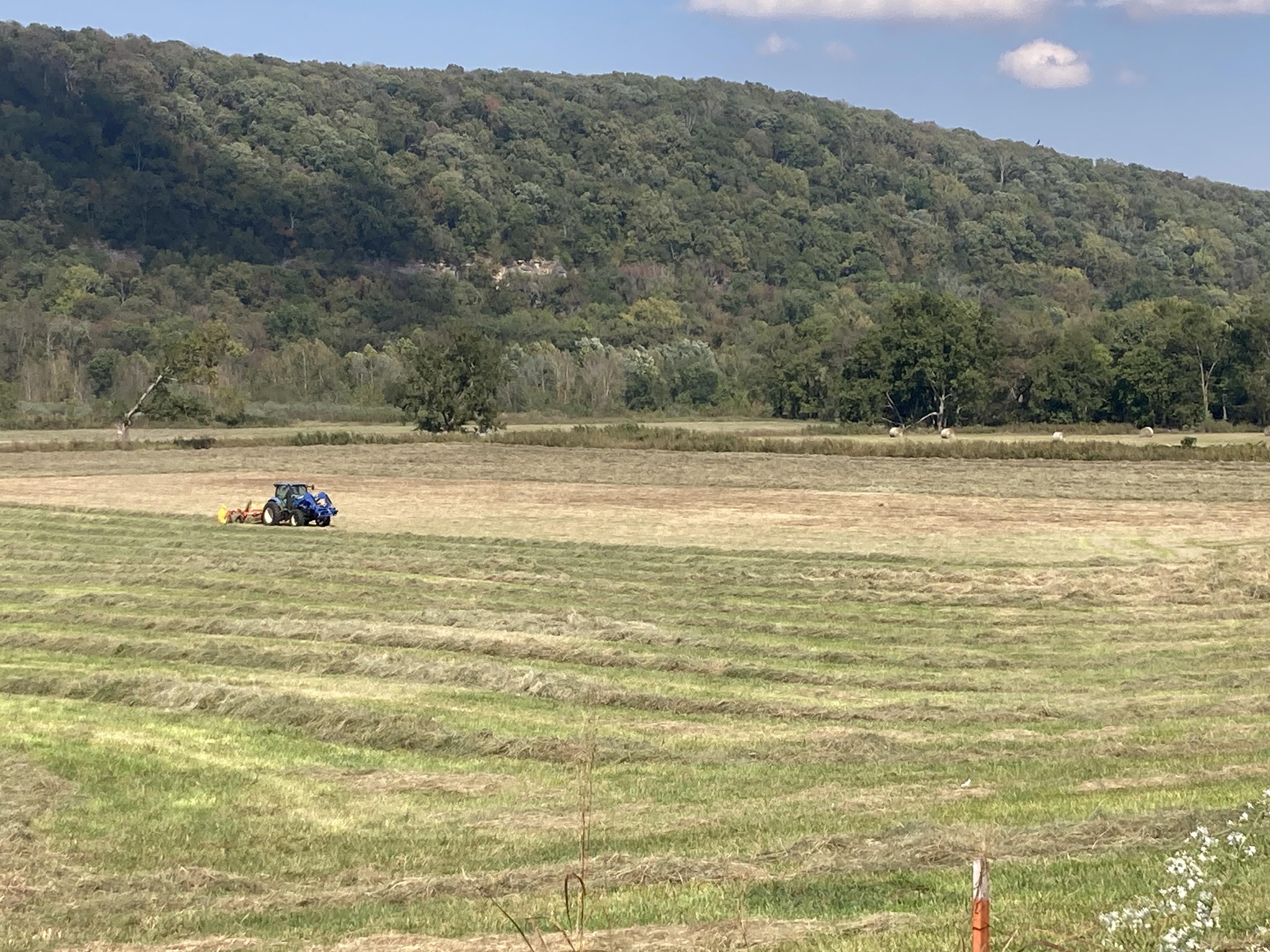Kentucky 31 Fescue
Contact
University of Arkansas System Division of Agriculture
Cooperative Extension Service
2301 S. University Ave.
Little Rock, AR 72204

Kentucky 31 Fescue
I’ve driven these Ozark roads for 50 years and have become accustomed to the sensual curves of the hills, the brooding look of the oaks and the bright green pastures. But it has not always been this way. The forest before the wholesale logging 140 years ago was very different and the pastures used to turn brown in the winter, not stay green as they do today. Those bright green pastures are new features of the Ozarks, coming on after WWII.
My late friend Teddy Morelock was a native Arkansan with a dry sense of humor. He once told me how to get rich farming an Ozark hillside. His suggestion was to push down a few trees in the summer, plant Kentucky 31 tall fescue in the fall, spread copious amounts of chicken litter in February and then sell the farm to a Texan in May. I don’t know if this would really work but there is no doubt that Kentucky 31 tall fescue transformed the Ozarks and much of the mid-south – an area agronomists refer to as the transition zone – where cool season grasses do better further north and warm season grasses do better further south. Today this ubiquitous grass is planted over about 35 million acres, making it the most important forage grass in the country.
Tall fescue probably was introduced into this country before 1800, possibly as an accidental contaminant of meadow fescue, which was introduced from England for farmers in the New England states. It is a cool season grass, growing best as temperatures cool down in the fall, remaining green over winter and then flowering and producing seed in the late spring.
In 1931 E. N. Fergus, an agronomy professor at the University of Kentucky, collected seed from a steep hillside farm in Menifee County, KY which was still green despite a serious regional drought. The pasture grass had been growing on that hillside with no particular care since at least 1890. During the next decade, he evaluated the plant’s performance under a variety of site conditions, bulked up the seed supply and finally introduced it in 1943 as Kentucky 31 fescue. Interestingly, it wasn’t until the 1950s that this new wonder grass was correctly identified as tall fescue (Festuca arundinacea) and not meadow fescue. Word spreads fast in the farm community and this tough, long-lived, drought-tolerant, insect-resistant grass quickly spread across the mid-South region. When I arrived in the Ozarks 30 years later, it was planted everywhere and looked as if it had always been there. It also became the go-to grass for planting along roadways and in lawns. The south lawn of the Whitehouse is said to be planted to a turf-type tall fescue selection.
Then in the late 1970s, a USDA scientist identified an endophytic fungus growing between the cells of Kentucky 31 fescue leaves. The mycelial strands of the fungus never showed themselves on the surface but the mutualistic symbiosis between the fungus and the grass was what made this grass so tough and long-lasting once planted. The fungus mycelium grows into the seeds and spreads to new plantings only via these infected seeds. But the mycelium dies after about a year of dry storage, so it is possible to get endophyte-free strains. Even though endophyte-free strains are available, the Arkansas Cooperative Extension Service does not recommend them because the toughness advantage and increased drought tolerance outweighs the slight disadvantages of cattle grazing on the endophyte-infected grass.
The persistence of this endophyte-infected forage grass is a blessing and a curse. In side-by-side comparison studies, plots that were endophyte free thinned out more quickly and allowed other plants room to grow whereas the endophyte infected sites remained firmly in control and prevented other species from encroaching on the plot. Kentucky forage scientists say you should plan on replanting endophyte free fescue pastures about every four years whereas it is not uncommon for 40-year-old plantings of endophyte-infected Kentucky 31 to still be going strong.
A sad consequence of the toughness of Kentucky 31 tall fescue is that it has come to dominate not only pastures and roadsides, but has moved into most disturbed places. Quail have almost completely disappeared from the Ozarks, largely because the diversity of seed supply needed to keep a population going year-round is gone.
